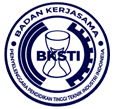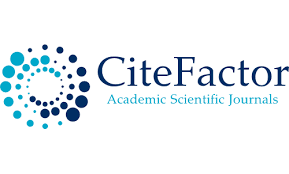Designing a Marketing Strategy for Bawis Habati Fish Chips Using the Quantitative Strategic Planning Matrix (QSPM) Method
Abstract
Habati fish chips is one of the Micro, Small, and Medium Enterprises (MSME) in the food industry in the city of Bontang. Habati MSME still applies simple promotion methods and does not target the teenage market to compete. This research aims to design a marketing strategy for Habati fish chips in Bontang city, targeting a new market segment, which is teenagers. The marketing strategy analysis is conducted in three stages: input stage, matching stage, and decision stage. In the input stage, Internal Factor Evaluation (IFE) matrix is used with a score of 2.338, External Factor Evaluation (EFE) matrix with a score of 2.764, and Competitive Profile Matrix (CPM) to determine the position of Habati MSME compared to Pak Ucil and Abadi Rasa based on the perspective of potential consumers. The matching stage is then used to formulate marketing strategies using the Internal-External (IE) matrix and Strengths, Weaknesses, Opportunities, and Threats (SWOT) matrix. Based on the overall methods used, the final stage is the decision stage. The decision stage utilizes the Quantitative Strategic Planning Matrix (QSPM) to select prioritized alternative strategies that can be implemented by Habati MSME. The research results provide seven alternative strategies with one prioritized strategy having the highest Total Attractive Score (TAS), which is to increase product sales through online marketing, utilizing marketplaces, and promoting product advantages, with a TAS of 7.074.
Keywords
Full Text:
PDFReferences
Alfiana, N. F., & Enny, A., (2023). Marketing Strategy Analysis on Features Live Shopping with Game Theory (Case Study:Live Shopping Users in Surabaya City). IJIEM-Indonesian Journal of Industrial Engineering & Management, 4(3), 288-302. https://dx.doi.org/10.22441/ijiem.v4i3.20931
Aliami, S., Muslih, B., & Sardanto, R. (2022). Analisis Segmenting , Targeting , dan Positioning pada Batik Tulis Ningrat Prasojo. Jurnal Penelitian Manajemen Terapan (PENATARAN), 7(1), 67–78.
Bontang, B. P. S. (BPS) K. (2021). Kota Bontang dalam Angka, Bontang Municipality in figures. Badan Pusat Statistik Kota Bontang. bps.go.id
David, F. R., & R, D. and. (2015). Manajemen Strategik Suatu Pendekatan Keungulan Bersaing Edisi- 15. Salemba Empat.
Hariyadi, G. (2020). SWOT Matrix Strategy Formulation using SMART GE 1.0 on Jordan Plastics. Jurnal INFOKAM, 16(2), 94–104.
Kotler, P., & Keller, K., L. (2009). Manajemen Pemasaran (13 Jilid 2). Erlangga.
Krisning Tyas, S., & Chriswahyudi. (2017). Perencanaan Strategi Pemasaran Dengan Pendekatan Matrik Ie, Swot Dan Ahp Untuk Mendapatkan Alternatif Strategi Prioritas. Seminar Nasional Sains Dan Teknologi, 1–9.
Maisaroh, S. S., & Minto, W. (2023). Analysis of Marketing Strategies at Fried Chicken Restaurant Nelongso UPN Branch Using the SWOT Analysis Method. IJIEM-Indonesian Journal of Industrial Engineering & Management, 4(3), 471-481. https://dx.doi.org/10.22441/ijiem.v4i3.21527
Purbohastuti, A. W. (2021). The Marketing Mix Effectiveness on Indomaret's Consumer Purchase Decision: Marketing Mix. Jurnal Sains Manajemen, 7(1), 1–17. DOI: 10.30656/sm.v7i1.2707
Rahardjo, S., Tambunan, W., & Sukmono, Y. (2022). Analisis strategi pemasaran pupuk NPK Pelangi untuk menghadapi pasar bebas ASEAN. Journal Industrial Servicess, 7(2), 276-280. http://dx.doi.org/10.36055/jiss.v7i2.13996
Rusdi, M. (2019). Strategi Pemasaran Untuk Meningkatkan Volume Penjualan Perusahaan Genting Ud. Berkah Jaya. JSMB, 6(2), 2019–2068.
Sari, I. D. O. (2019). Analisis Faktor Eksternal dan Internal Sebagai Dasar Perumusan Strategi Bisnis UD Sekar Jati Star Jombang. Jurnal Akuntansi AKUNESA, 53(9), 1689–1699.
Setyorini, H., Effendi, M., & Santoso, I. (2016). Analisis Strategi Pemasaran Menggunakan Matriks SWOT dan QSPM (Studi Kasus: Restoran WS Soekarno Hatta Malang). Industria: Jurnal Teknologi Dan Manajemen Agroindustri, 5(1), 46–53. https://doi.org/10.21776/ub.industria.2016.005.01.6
Yusup, F. (2018). Uji Validitas Dan Reliabilitas Instrumen Penelitian Kuantitatif. Jurnal Tarbiyah, 7(1), 17–23. DOI: 10.18592/tarbiyah.v7i1.2100
DOI: http://dx.doi.org/10.22441/ijiem.v5i1.22038
Refbacks
- There are currently no refbacks.

This work is licensed under a Creative Commons Attribution-NonCommercial 4.0 International License.
IJIEM - Indonesian Journal of Industrial Engineering & Management
Program Pascasarjana Magister Teknik Industri Universitas Mercu Buana
Kampus Menteng - Gedung Tedja Buana, Floor 4th
Jl. Menteng Raya No. 29 Jakarta Pusat- Indonesia
Tlp.: +62 21 31935454 Fax: +62 21 31934474
http://publikasi.mercubuana.ac.id/index.php/ijiem
Email: [email protected]

This work is licensed under a Creative Commons Attribution-NonCommercial 4.0 International License.
The journal is indexed by:





1.png)
.png)
.png)
.png)







